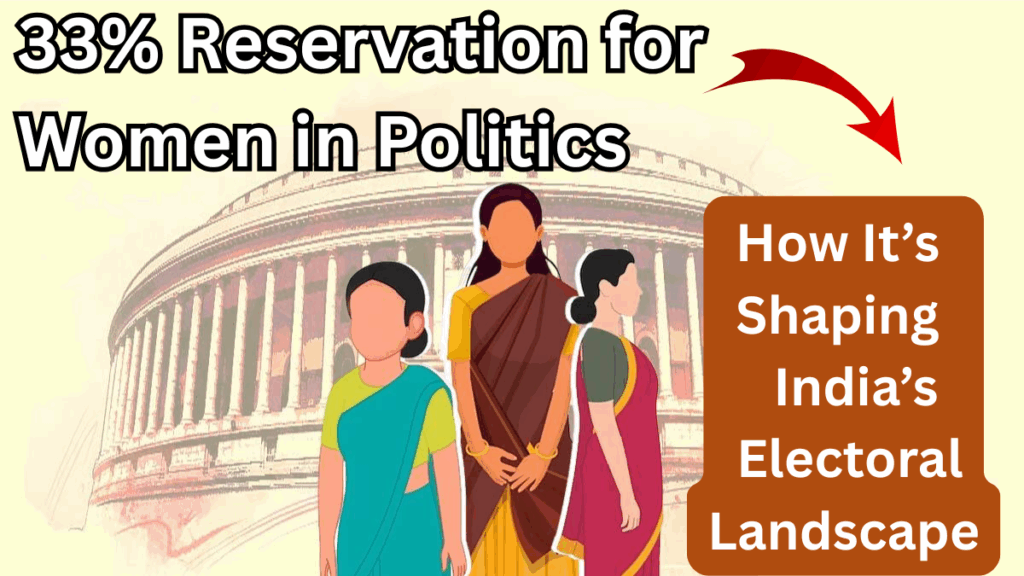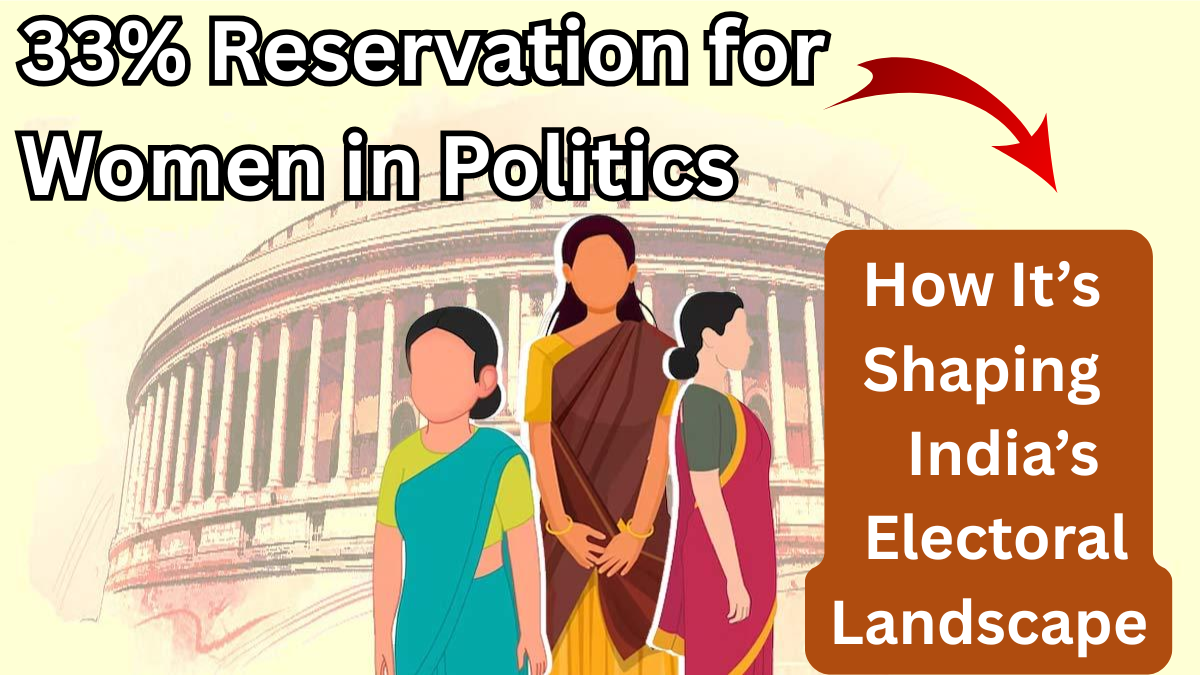The push for Reservation for Women in Politics is no longer just a policy discussion—it’s becoming a transformative movement. The 33% Bill and its impact on Indian politics is evident, as more women are stepping into roles of power, shaping policies, and redefining governance.
Let’s explore how this landmark move is changing the electoral landscape in India.

Why Does Women’s Reservation Matter?
India’s democracy thrives on representation. For years, women’s voices in decision-making spaces were limited. The 33% Reservation for Women in Politics is an effort to bridge that gap, ensuring that half of the population is no longer underrepresented.
Key reasons why it matters:
-
Empowerment through representation: Women leaders bring unique perspectives to policymaking.
-
Balanced governance: Policies become more inclusive when women contribute actively.
-
Boosting electoral participation: More women candidates encourage women voters to engage in politics.
The 33% Bill and Its Impact: A Game-Changer
The Women’s Reservation Bill—often referred to as the 33% Bill—mandates that one-third of all seats in the Lok Sabha and State Legislative Assemblies be reserved for women.
How it’s reshaping India’s political narrative:
| Impact Area | How It’s Changing Politics |
|---|---|
| Increased Representation | More women contesting and winning elections. |
| Policy Priorities | Greater focus on issues like education, health, and women’s safety. |
| Grassroots Empowerment | Encouragement for women to participate in panchayat and local-level politics. |
| Electoral Dynamics | Political parties rethinking strategies to include and promote women candidates. |
What Does This Mean for Voters?
For voters, this isn’t just about numbers—it’s about better governance and diverse leadership. The 33% Bill and its impact go beyond women’s representation; it ensures policies reflect real needs at the ground level.
Why voters should care:
-
More accountability from leaders
-
A chance for communities to see real issues (like healthcare, child welfare, and education) prioritized
-
Inspiring more young women to step into leadership roles
Challenges on the Road Ahead
While the progress is commendable, there are still hurdles:
-
Tokenism: Ensuring that women leaders aren’t just symbolic but active participants
-
Cultural barriers: Overcoming societal mindsets that still resist women in leadership
-
Implementation delays: Speeding up the actual execution of the 33% reservation in assemblies and parliament
The Bigger Picture: A Step Towards Gender-Equal Politics
The Reservation for Women in Politics is a step toward gender parity, but it’s only the beginning. For this to truly succeed:
-
Political parties must support women beyond quotas
-
Voters need to challenge gender biases
-
Women leaders must receive training and mentorship to maximize their impact
FAQs
1. What is the 33% Women’s Reservation Bill?
It’s a proposed law that reserves one-third of seats in the Lok Sabha and State Legislative Assemblies for women, aiming to enhance their participation in politics.
2. How will the Reservation for Women in Politics benefit governance?
It ensures more inclusive decision-making, as women often bring different perspectives and prioritize policies like education, healthcare, and welfare.
3. Has the 33% reservation been implemented fully?
Not yet. While discussions and approvals have taken place, full implementation at all levels is still pending.
4. Will this reservation affect male candidates?
It will require political parties to allocate a portion of seats to women, but it enriches democracy by making political representation more balanced.
Click here to learn more
